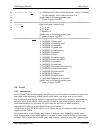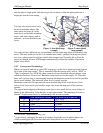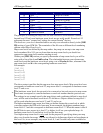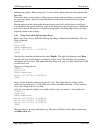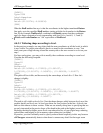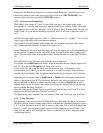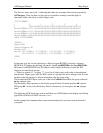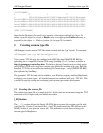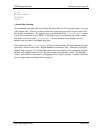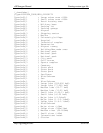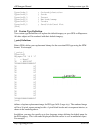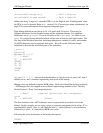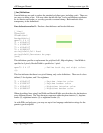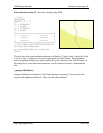
cGPSmapper Manual Creating custom type file
http://cgpsmapper.com/ 47 of 100
[DICTIONARY]
; 0 1 2
; 123456789abcdef0123456789abcdef0123456789abcdef
Level1RGN10=00000000000000000000000000000000000000000100000
Level2RGN10=00000000000000000000000000000000000000000100000
Level3RGN10=00000000000000000000000000000000000000000100000
Level4RGN10=00000000000000000000000000000000000000000000000
[END DICTIONARY]
Note that the Dictionary 'bit mask' only operates on the objects defined on a layer. To
define a specific object on a layer, a Data#= entry or an appropriate EndLevel= entry is
required for the object. Refer to section 4.4 (on page 39) for details.
5 Creating custom type file
cGPSmapper creates custom TYP files when invoked with the ‘typ’ switch. For example,
cGPSmapper.exe typ MyCustomTypes.txt
Your custom .TYP file may be combined with .IMG files into GMAPSUPP.IMG for
uploading into a compatible Garmin GPSr using SendMap 2.0 v3.3 or later, available at
http://cgpsmapper.com/en/buy.htm. We believe that any Garmin receiver which works
with Garmin’s POILoader may have custom type definitions installed with your .IMG file.
Installed .TYP files do not affect the rendering of Garmin maps – only GMAPSUPP.IMG
files uploaded by SendMap.
The generated .TYP file may also be added to your Windows registry enabling MapSource
to display your custom types. All installed mapsets are rendered with your .TYP file. This
is useful for quickly testing and evaluating your custom types under development.
5.1 Creating the source file
The custom type input file is a simple text file. At this time we recommend using the .TXT
extension so it will open with your default text editor.
[_ID] Section
The [_ID] section defines the Family ID (FID) that associates this custom type file with
your map file. Product Code should be 1; your FID should match the FID declared in the
[MAP] section of your preview source file. This definition is used when viewing your
custom types in MapSource.



